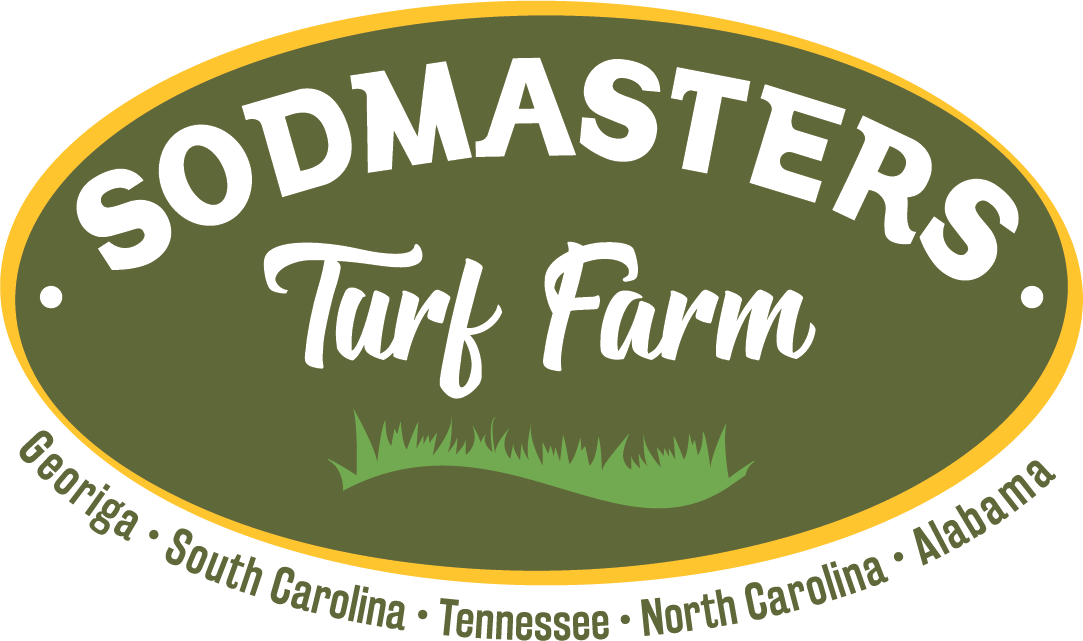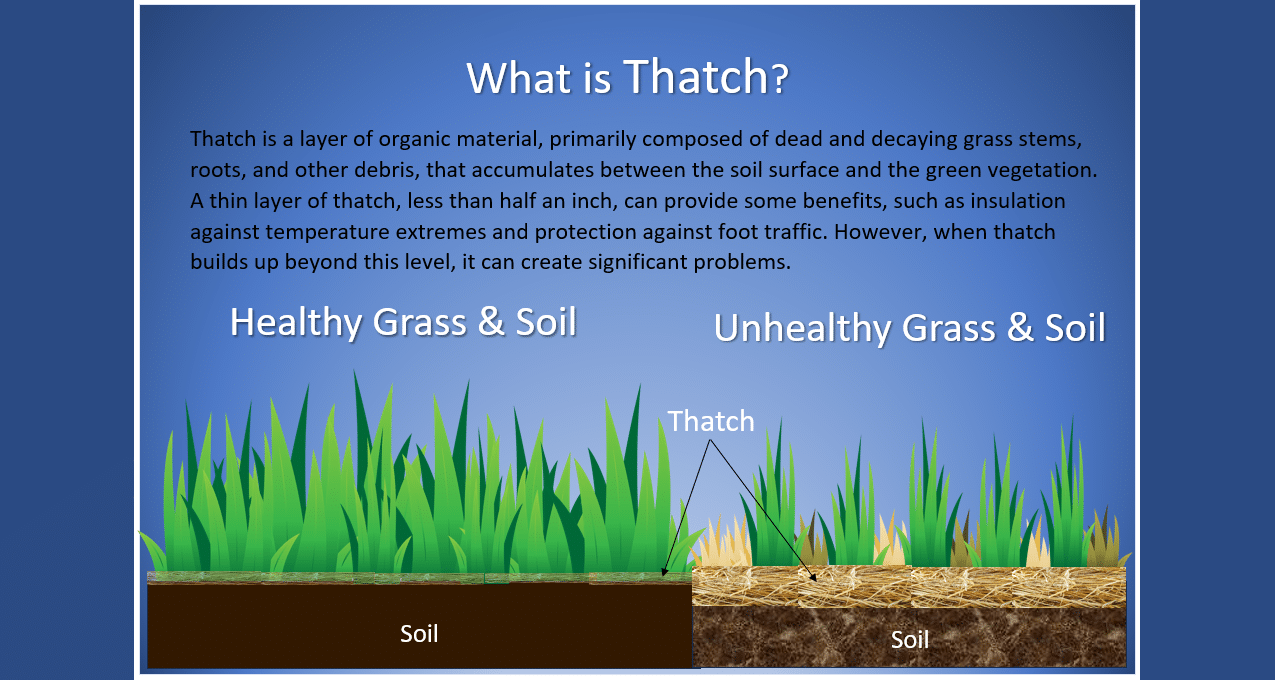Thatch is a common issue in landscaping that can significantly impact the health and quality of sod. While a small amount of thatch is normal and can even be beneficial, excessive thatch can lead to a host of problems. Understanding what thatch is and how it affects sod can help turf managers take proactive steps to mitigate its negative effects.
What is Thatch?
Thatch is a layer of organic material, primarily composed of dead and decaying grass stems, roots, and other debris, that accumulates between the soil surface and the green vegetation. A thin layer of thatch, less than half an inch, can provide some benefits, such as insulation against temperature extremes and protection against foot traffic. However, when thatch builds up beyond this level, it can create significant problems.
Problems Caused by Excessive Thatch
1. Impedes Water and Nutrient Penetration
Excessive thatch acts like a sponge, absorbing water and nutrients meant for the soil. This can lead to a condition where the grass roots receive insufficient water and nutrients, resulting in poor growth and weak sod. The dense layer of thatch can also prevent fertilizers from reaching the soil, reducing their effectiveness.
2. Promotes Disease and Pests
Thatch provides an ideal environment for the increase of pests and diseases. It offers shelter and food for insects like sod webworms and grubs, which can damage the grass. Additionally, the moist, organic nature of thatch can harbor fungal spores and pathogens, leading to turf diseases such as brown patch and dollar spot. These issues can cause significant damage to sod, compromising its health and appearance.
3. Reduces Airflow to Roots
Healthy grass roots require adequate airflow for optimal growth. A thick layer of thatch can restrict this airflow, creating an oxygen-poor environment that inhibits root development. Poor root growth leads to weaker, less resilient sod that is more susceptible to environmental stresses such as drought and heavy foot traffic.
4. Increases Mowing Difficulties
Thatch can make mowing more challenging and less effective. The thick layer of organic material can cause mower blades to scalp the turf, damaging the grass and leaving it vulnerable to disease. Additionally, thatch can dull mower blades more quickly, leading to increased maintenance and replacement costs.
5. Compromises Turf Aesthetics
Excessive thatch can affect the overall appearance of sod. It can create a spongy, uneven surface that detracts from the smooth, uniform look desired in lawns and landscapes. Furthermore, the presence of pests and diseases associated with thatch can lead to discolored patches and bare spots, further compromising the aesthetic quality of the turf.
Managing Thatch
To prevent and manage thatch buildup, landscapers can implement several strategies:
- Regular Aeration: Aeration helps break up thatch and promotes decomposition by allowing air, water, and nutrients to penetrate the soil. This encourages microbial activity that breaks down organic matter.
- Proper Mowing Practices: Mowing at the correct height and frequency can prevent thatch buildup. Avoid cutting more than one-third of the grass blade at a time to minimize stress on the turf.
- Adequate Irrigation: Watering deeply and infrequently encourages deeper root growth, reducing the reliance on surface water and minimizing thatch formation.
- Balanced Fertilization: Avoid excessive use of nitrogen fertilizers, which can promote rapid grass growth and contribute to thatch accumulation. Use a balanced fertilizer regimen to support healthy, sustained growth.
- Thatch Removal: For severe thatch problems, dethatching machines or vertical mowers can be used to physically remove the excess layer.
- Thatch Master: A chemical available at Sodmasters Landscape Center will transform thatch into organic matter, release nutrition and increase airflow.
Thatch is a common but manageable issue in landscaping. By understanding the problems excessive thatch can cause and implementing effective management strategies, landscapers can maintain healthy, vibrant sod. Addressing thatch issues promptly ensures that sod remains strong, resilient, and aesthetically pleasing, providing a high-quality turf surface for various applications.



